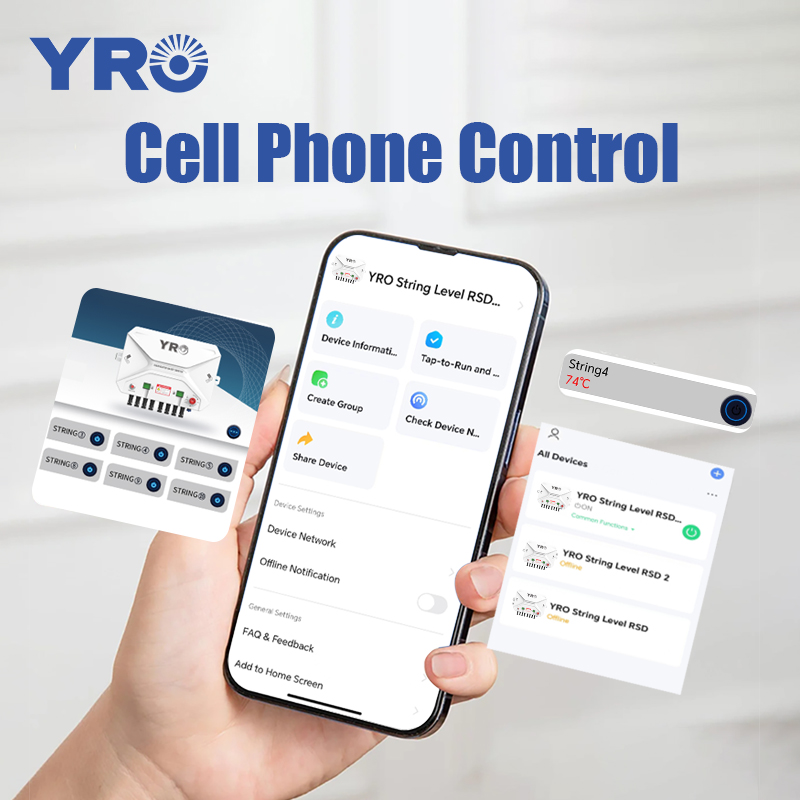In the safety framework of photovoltaic (PV) power stations, rapid shutdown devices serve as a critical safety barrier, holding significance comparable to PV modules themselves. Many users, after installing an RSD, assume that normal operation means no further attention is required. However, installation is merely the first step—implementing a scientific maintenance strategy is the key to ensuring long term effectiveness.
Why Is It Necessary to Maintain Shutdown Devices?
After the equipment is installed, if it is not managed on a daily basis, problems such as aging components, loose wiring, and rainwater erosion will gradually affect the operational status. When the internal components reach a critical point of wear and tear, the emergency power off mechanism may experience a delayed response or even fail completely. Regular implementation of standardized maintenance procedures, is the fundamental condition to guarantee the stable response of the whole system at critical moments.
How to Properly Maintain a PV Shutdown Device?
1. Routine Inspections
- Appearance & Sealing: Check the equipment casing carefully every week/month, focusing on whether there are any cracks, deformation or rust spots. For equipment installed in dusty or outdoor areas, pay attention to whether the waterproof and dustproof measures are intact to ensure that the insulation is not damaged.
- Wiring & Connectors: Check cables and terminals for looseness to avoid shutdown failures caused by poor electrical contact.
2. Rapid Shutdown Testing
Regular rapid shutdown function test is the key to ensure that the equipment is in good working condition. Maintenance personnel in accordance with the procedures to trigger the emergency shutdown button, with a voltmeter staring at the value of the equipment, to detect whether the voltage can be reduced to 80 V within 30 seconds. Test should pay attention to record the test data, abnormalities found in a timely manner to adjust or replace parts.
3. Preventative Measures
- Aging Parts Replacement: Control components such as relays that have been in operation for a long period of time will gradually age. It is recommended that a regular replacement schedule be established according to the service life in the equipment manual. Especially for equipment working in high temperature and humid environment, key components should be replaced in due time in advance to prevent safety accidents caused by component failure.
- Failure early warning system: Enterprises that have the conditions can be retrofitted with intelligent monitoring modules. Through real time data to monitor the working status of fast shutdown equipment. Once abnormal voltage, temperature or current is detected, the system automatically sends out an early warning message and records the time, part and specific value of the failure, which is convenient for subsequent analysis and troubleshooting.YRO has WiFi shutdown equipment, which can check the temperature and operation status in real time through cell phones, and once unstable power or high temperature is detected, the equipment will automatically cut off the PV panels to ensure the safe and stable PV system operation.

4. Record Management
- Establishing Maintenance Logs: Every inspection, test, cleaning, and repair task should be meticulously documented to form a maintenance archive. This record should include system performance data, test results, fault occurrences, and corrective actions, enabling long term tracking and early detection of potential issues.
- Manufacturer Technical Support: After installation, manufacturers typically offer technical support for a limited period. Maintenance personnel should make full use of this resource by regularly consulting the manufacturer for updates on technological advancements and maintenance recommendations. For complex issues, professional technicians or manufacturer representatives should be consulted for on site inspections and repairs to keep the device in optimal working condition.
Conclusion
Solar rapid shutdown devices should not be treated as a “set it and forget it” solution. A systematic and scientific maintenance approach is essential to ensuring the long term safe operation of PV systems. Regular inspections, timely repairs, and ongoing technological updates are the best strategies to ensure the device functions properly in critical situations.
